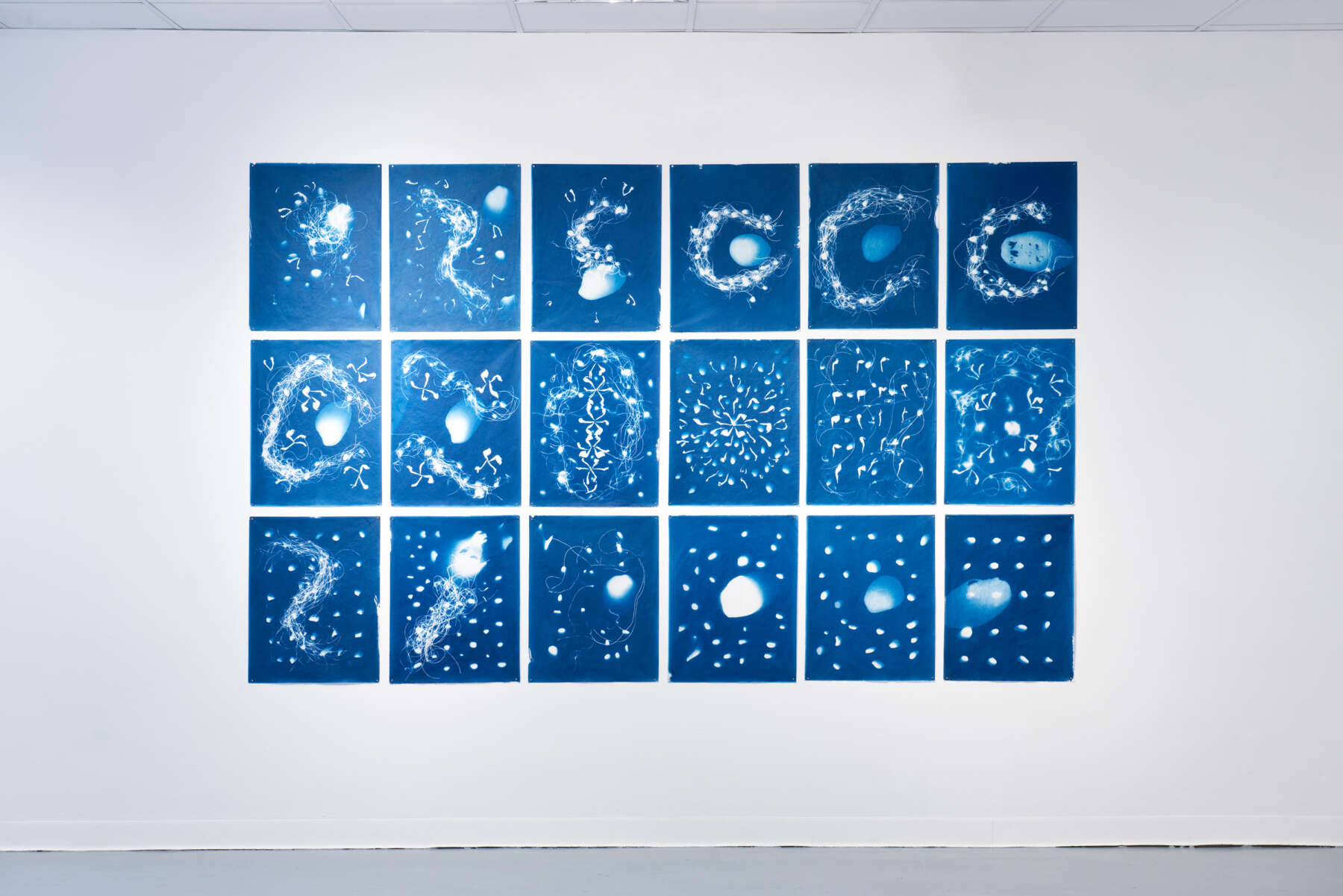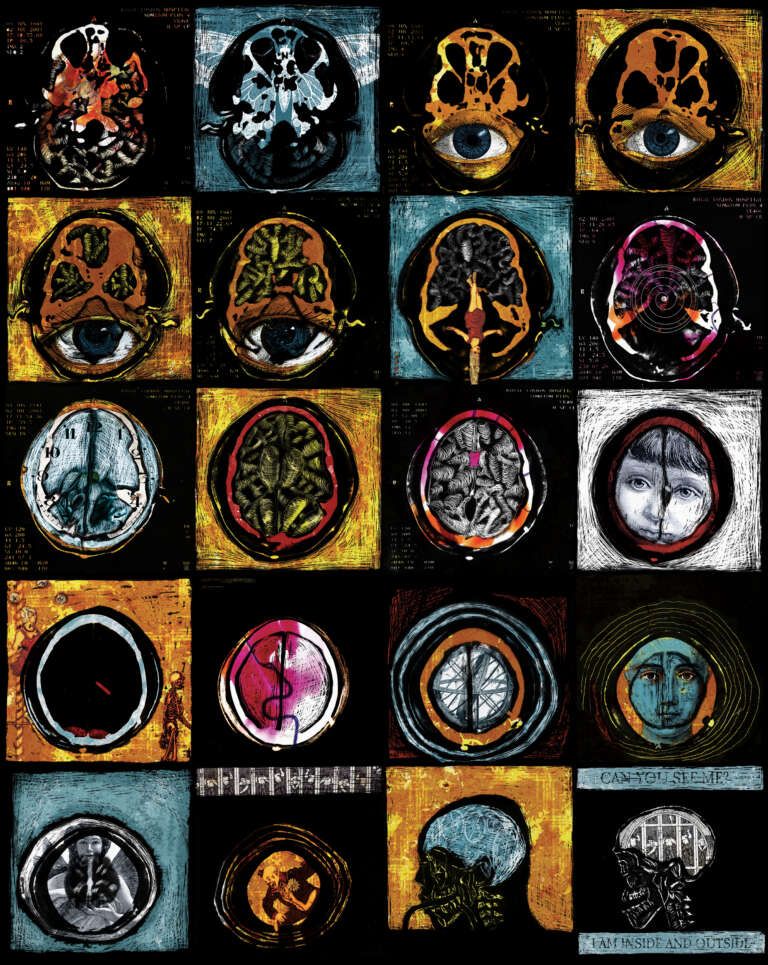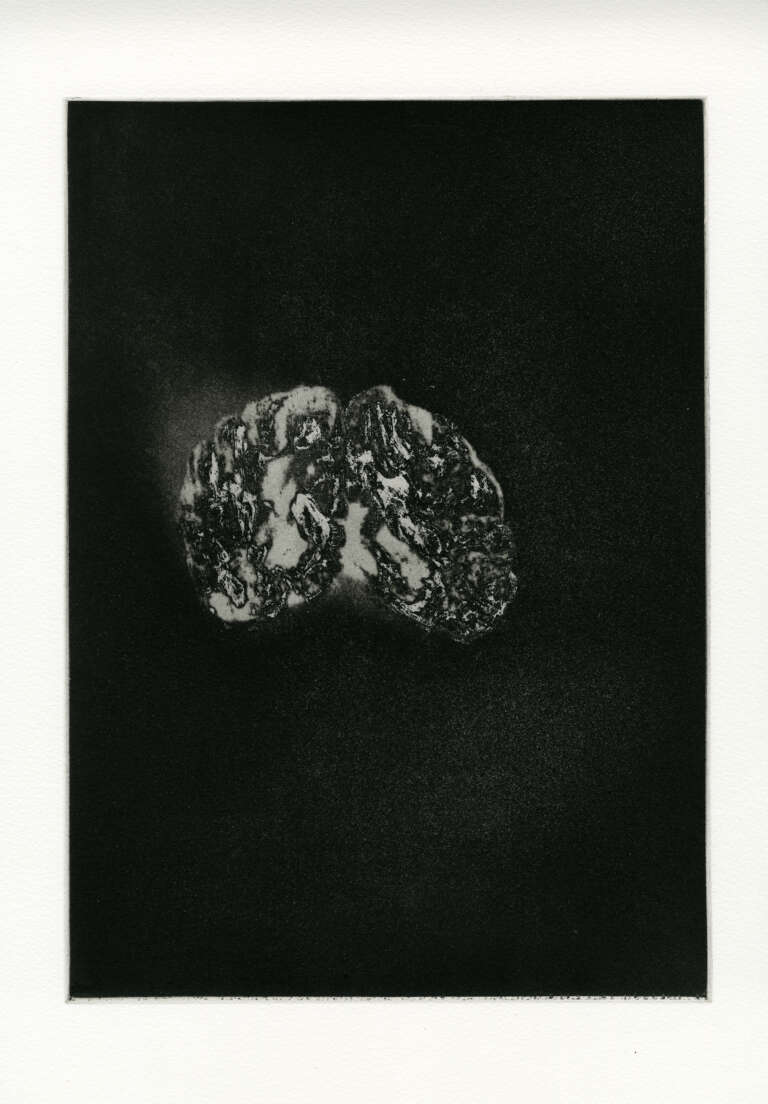Susan Aldworth, born in 1955, is an artist known for her exploration of consciousness, identity, and the human mind. With a background in philosophy, Aldworth’s exemplifies the blend of art and science and establisher her as a significant figure in the UK’s Art & Science movement since the late 1990s.

Louise Crawford
Her creative practice utilizes various mediums, including printmaking, drawing, installation, and time-based media, bringing into light the lived experiences of individuals, particularly those related to medical and psychological conditions.
Aldworth’s work is featured in prestigious collections such as the Victoria & Albert Museum, the British Museum, the Fitzwilliam Museum, and the British Library, and she has exhibited extensively both in the UK and internationally.
Her artistic innovation is evident in projects like “Transience,” a series of etchings made directly from human brain tissue, and “Out of the Blue,” a kinetic installation that visualizes the experience of epilepsy through embroidered Victorian garments.

Colin Davison
As an associate lecturer at University of the Arts London: Central Saint Martins, Aldworth also contributes to academic discourse, and her residency work in medical and academic settings allows for close collaboration with scientists, patients, and healthcare professionals.
The Interview
You can learn more about Susan’s work by visiting her website: susanaldworth.com















*All images and information are © Susan Aldworth unless otherwise stated.
Disclaimer: The views and opinions expressed in this interview are those of the interviewees and do not necessarily reflect the views or positions of Public Health Landscape or Valent BioSciences, LLC.
